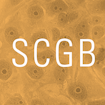
Global Brain
The Simons Collaboration on the Global Brain (SCGB) aims to expand our understanding of the role of internal brain processes in the arc from sensation to action, thereby discovering the nature, role and mechanisms of the neural activity that produces cognition.
Events & Lectures
View All-
Sorry, there are no upcoming events.
News



Sign up for SCGB updates
Research Highlights
Abstract representations emerge naturally in neural networks trained to perform multiple tasks
WJ Johnston, S. Fusi
Nat Commun Mice and primates use distinct strategies for visual segmentation
FJ Luongo, L Liu, CLA Ho, JK Hesse, JB Wekselblatt, F Lanfranchi, D Huber, D. Tsao
Elife Encoding of dynamic facial information in the middle dorsal face area
Z Yang, W. Freiwald
Proc Natl Acad Sci U S A. 


